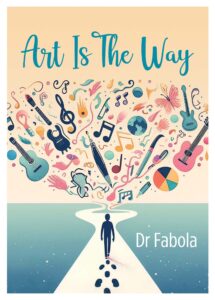
A few weeks ago I came across the checker shadow illusion and it left me feeling unsettled. In case you’ve not seen it before, it’s an optical illusion that features a checkerboard with light and dark squares, two of which are labelled A and B, with a cylindrical object placed near one corner of the board. If you look closely at the squares labelled A and B, they look like they have different colours i.e. A appears to be on a dark square while B appears to be on a light square. In fact, both squares are the same colour, and herein lies the illusion. What is actually happening is that the cylindrical object casts a shadow on the B square (which is a dark square), and this shadow creates a darkening effect over the square which causes the brain to overcompensate, thus lightening the square. The resulting illusion is that the B square looks lighter than the A square.
Even as I type this out, aware of the explanation for this illusion, I still struggle to see what I originally saw – two different shades for A and B – when I first looked at the image, and to this day, I still can’t see what I’m supposed to see. I’ve tried to look at it from different angles and perspectives, I’ve examined different versions of the illusion, I’ve even read articles and watched videos on it. Yet, the result is the same. Every time I look at the image, I fall for the illusion.
I don’t know about you, but things like this make me question everything I know about reality. This isn’t me getting all conspiratorial or melodramatic, but it makes me wonder how much I can trust my senses. How true to reality is what I see, or hear, or taste, or feel, or smell? And if these senses ultimately guide my thoughts and emotions, then how much do they lead my emotions astray? And if all the above holds, then it begs the all-important question, what can I do to be more in line with reality?
I’ve previously written about how our brains constantly filter out information and make stuff up. For instance, the tip of your nose is always in your field of vision, but you hardly notice it because the brain filters it out. Conversely, there’s a small portion of your vision which is a blind spot, but the brain deduces and predicts the images that should be there and it just fills in the blanks. In other words, your brain literally makes stuff up. There are many more examples of the differences between the actual stimuli hitting our senses and the resulting interpretation in our brains, and these are just some of the ones we know about.
This gives me food for thought especially when I find myself feeling down about a set I’ve played or a song I’m writing or how I’m not being as creative or as productive as I’d like to be. I can’t tell you how many times I’ve come off stage thinking my performance wasn’t up to standard, only to be met with compliments and feedback on how lovely the set was. This dichotomy in my perception of the event compared to how others see or perceive it, often serves as a reminder that perhaps my interpretation of the stimuli around me may not always be true to reality. And yet, just like the checker shadow illusion that gets me every time, it’s all too easy to forget that things aren’t always as they appear. And if things aren’t always as they appear, then it behoves us to stop, examine our feelings, and reconsider how our constructed internal reality may be different from the world outside.

P.S.: My debut non-fiction book, Art Is The Way, and my middle-grade novella, A Hollade Christmas, are out everywhere now. You can get them in all good bookstores and from all major online vendors.